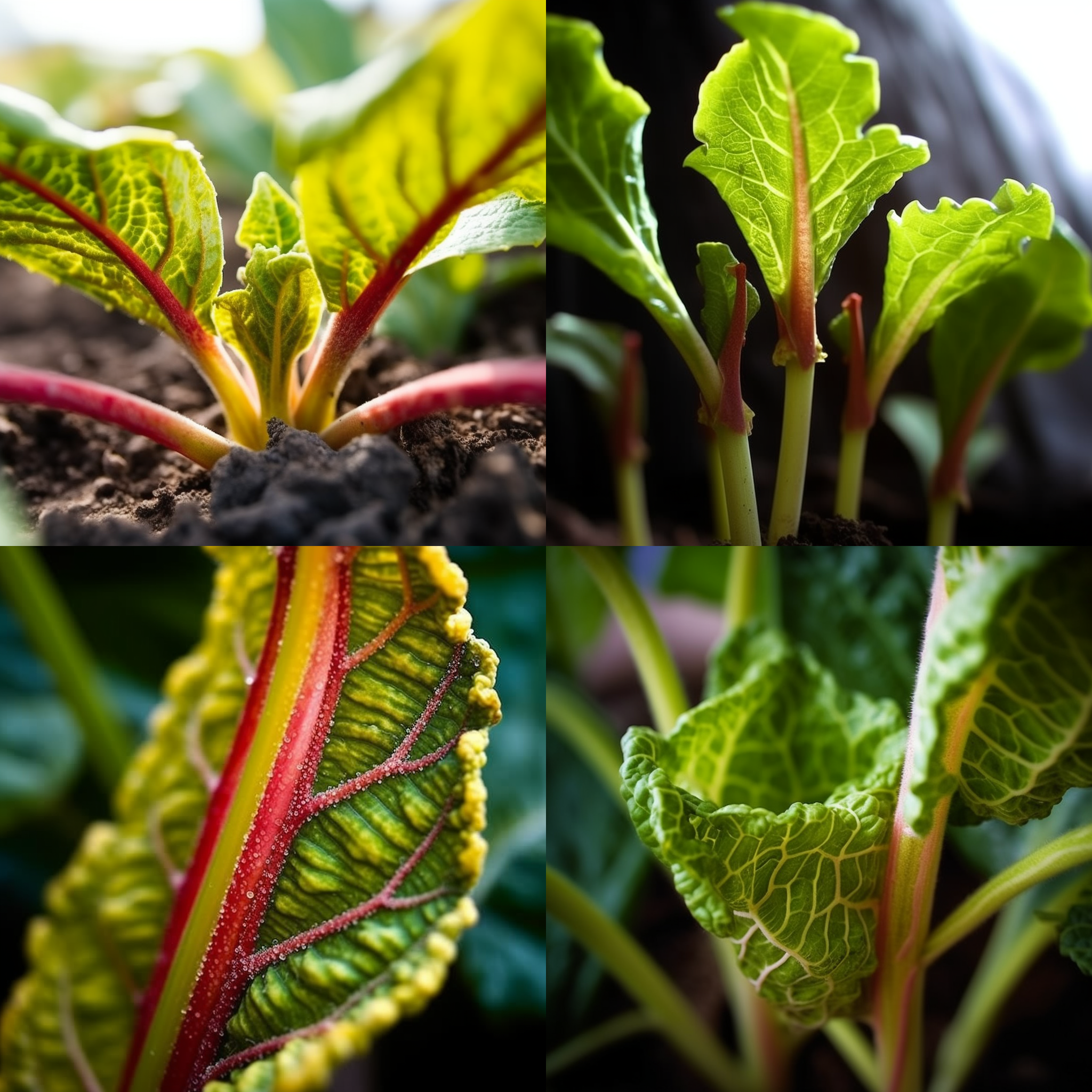Story of Day :
Contents
The Rhubarb Plant: A Complete Guide and Care Tips
Do you love the taste of tangy rhubarb in your pies, jams, and cakes? Do you want to grow this versatile and hardy plant in your garden but don’t know where to start? Look no further! In this complete guide, we’ll cover everything from planting to harvesting to help you grow healthy and delicious rhubarb.
What is Rhubarb?

Rhubarb (Rheum rhabarbarum) is a perennial plant that belongs to the Polygonaceae family. It’s native to Siberia but has been cultivated in Europe since the 18th century for its edible stalks. The stalks are red or greenish-pink, depending on the variety, while the leaves are large and green with a distinctive triangular shape. Although it’s technically a vegetable, rhubarb is often used as a fruit in cooking due to its tart taste.
Planting Rhubarb

Rhubarb plants prefer cool climates with moist soil that’s rich in organic matter. They require full sun or partial shade and well-drained soil with a pH between 5.0 and 6.8.
- Planting location: Choose an open area with good air circulation that’s free from weeds.
- Preparing the soil: Dig a hole about two feet deep and wide enough for the root system. Mix compost or well-rotted manure into the soil before planting.
- Spacing: Plant rhubarb crowns about four feet apart so they have room to spread out as they mature.
- Care after planting: Water the plant well after planting and keep the soil moist until it’s established. Mulching around the base of the plant with straw or leaves can help retain moisture and suppress weeds.

Caring for Rhubarb
Rhubarb plants are relatively easy to care for but require some attention to ensure healthy growth and a bountiful harvest.

- Fertilizing: Apply a balanced fertilizer, such as 10-10-10, in early spring before new growth appears. Avoid fertilizing after July because it can stimulate new growth that won’t have time to mature before winter.
- Watering: Keep the soil moist but not waterlogged. Rhubarb roots are prone to rot if they’re in standing water for too long.
- Pest control: Watch out for common pests like aphids, spider mites, and slugs that can damage rhubarb leaves and stalks. Use insecticidal soap or other organic methods to control them without harming beneficial insects like bees.
- Disease prevention: Rhubarb is susceptible to fungal diseases like crown rot, powdery mildew, and leaf spot. To prevent these diseases from taking hold, avoid overhead watering and space plants apart so air circulates freely between them.
Harvesting Rhubarb
Rhubarb stalks are ready to harvest when they’re about 12-18 inches long or as thick as your index finger. Don’t wait too long because overripe stalks become tough and woody. To harvest correctly,
- Cut off each stalk at ground level using a sharp knife or scissors. Don’t pull or twist the stalks because it can damage the crown.
- Leave at least one-third of the stalks on the plant to ensure healthy growth.
- Remove any flower stalks that appear, as they can divert energy from producing edible leaves and stems.
Cooking with Rhubarb
Rhubarb is a versatile ingredient that adds tangy flavor and bright color to a variety of sweet and savory dishes. Some popular recipes include rhubarb pie, crumble, jam, sauce, chutney, and even cocktails! Here are some tips for cooking with rhubarb:
- Sweet dishes: Combine rhubarb with sugar or honey to balance its tartness. It pairs well with strawberries, raspberries, apples, ginger, cinnamon, and vanilla. Be sure to remove any poisonous leaves before using only eat the red or pink stem.
- Savory dishes: Use rhubarb in sauces for meat or fish dishes. Its sharp flavor complements rich meats like pork and duck well.
The Bottom Line
Rhubarb is an easy-to-grow plant that provides a delightful taste in both sweet desserts and savory meals. By following these care tips for planting,rhubarb plants will reward you for years with bountiful harvests!
